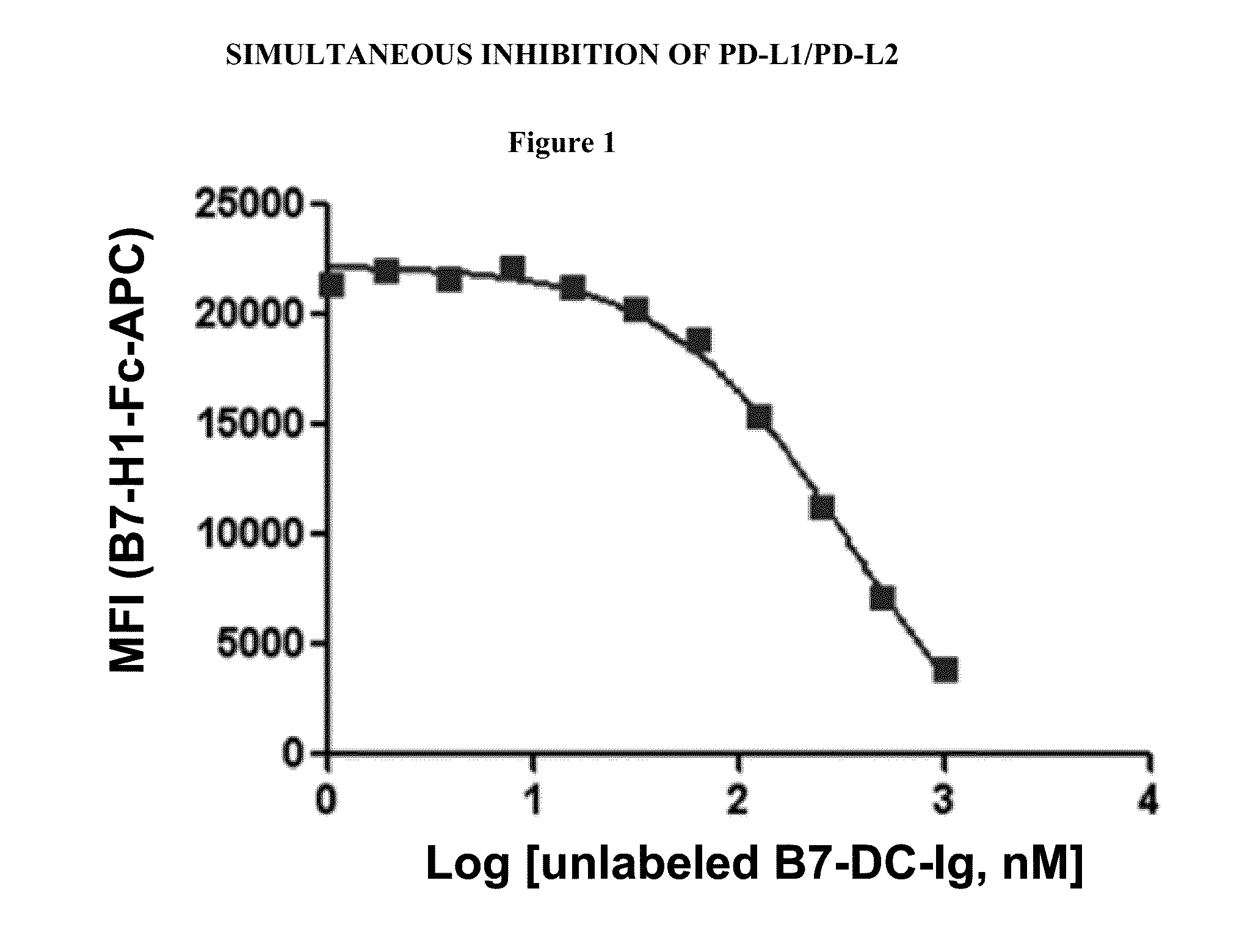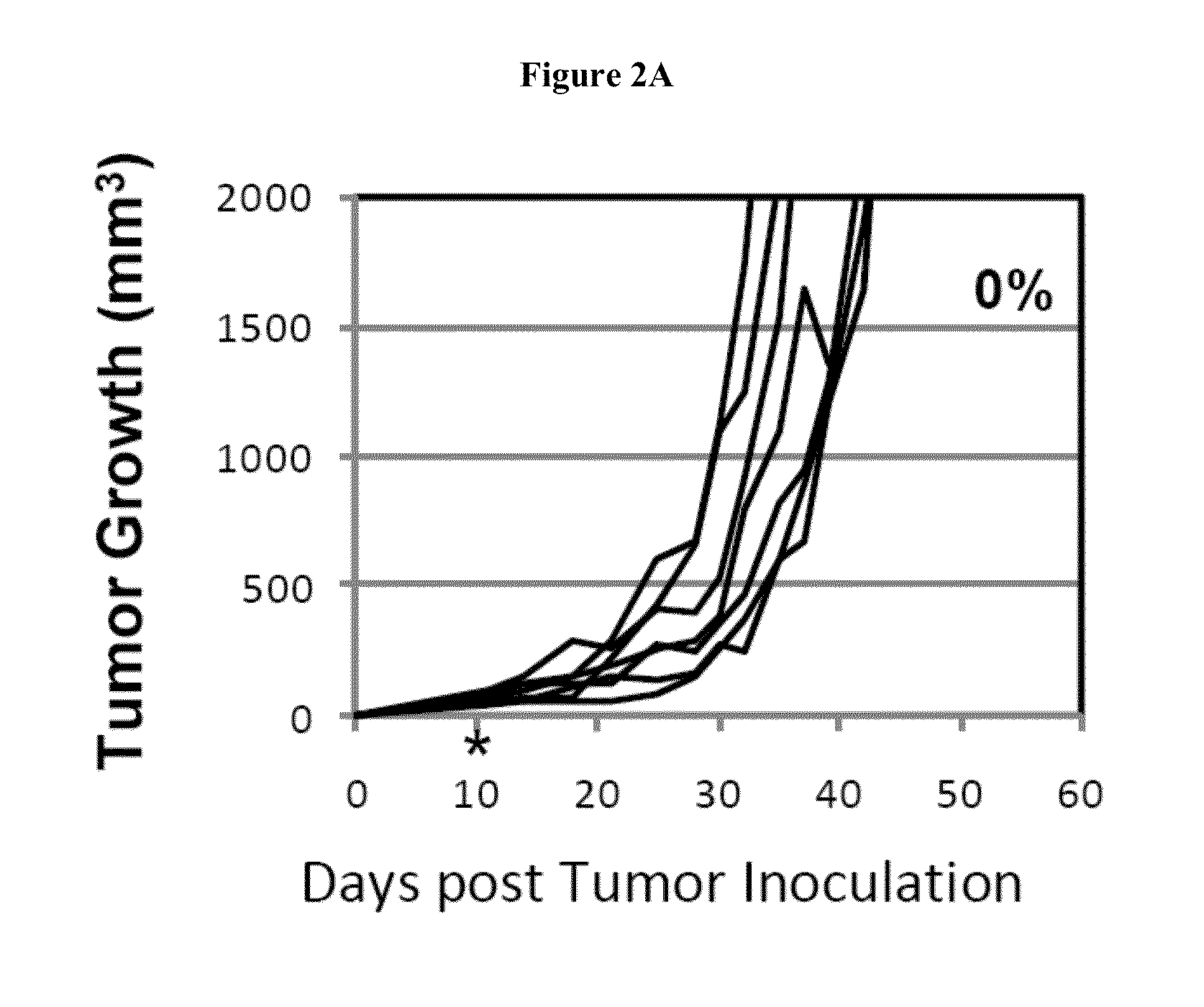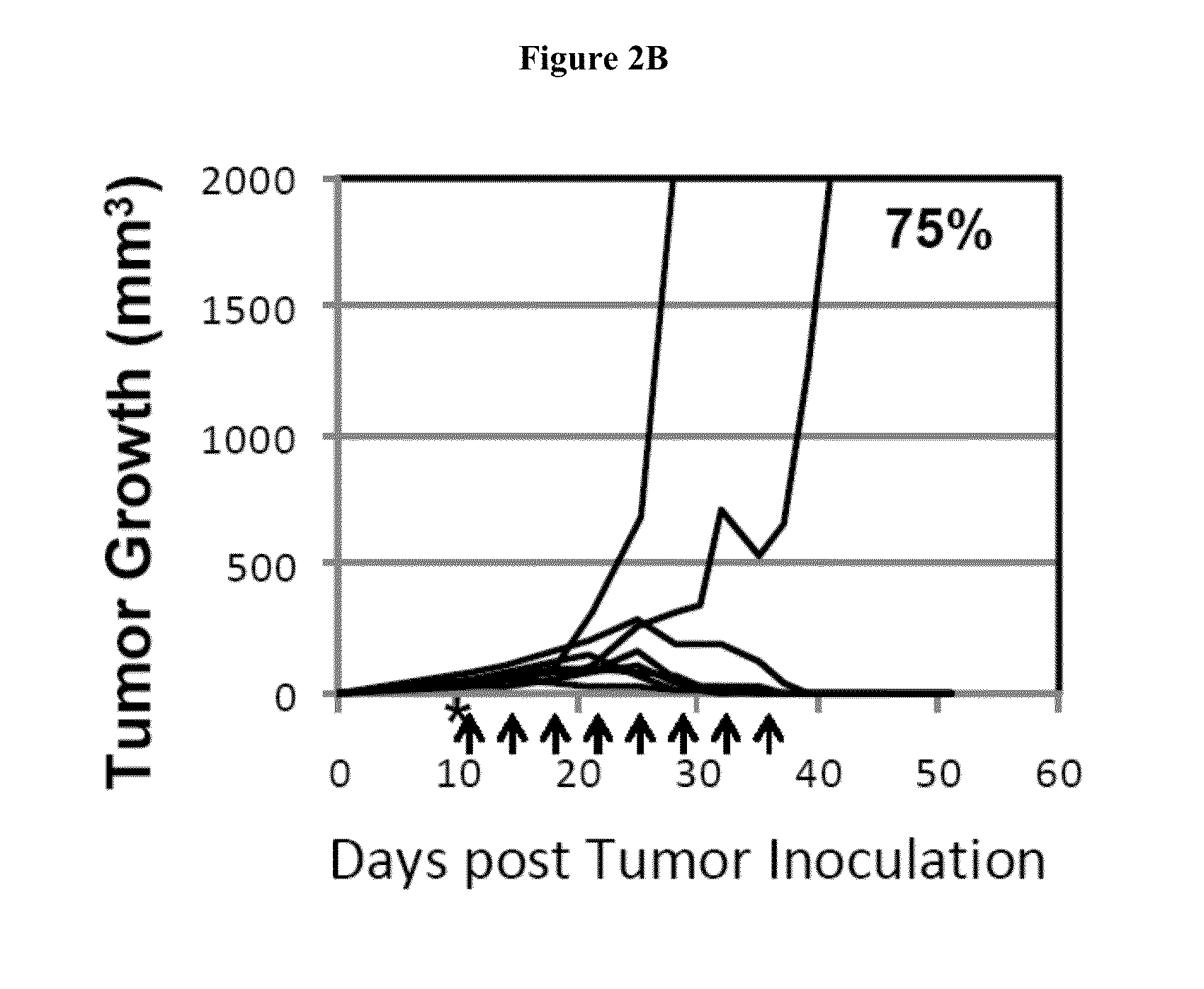Simultaneous inhibition of pd-l1/pd-l2
a pdl1 and pdl2 technology, applied in the field of pdl1 and pdl2, can solve the problems of weak t cell response of effector anti-tumor, weak functionality, etc., and achieve the effect of reducing treg response and robust effector respons
- Summary
- Abstract
- Description
- Claims
- Application Information
AI Technical Summary
Benefits of technology
Problems solved by technology
Method used
Image
Examples
example 1
Mutagenesis Analysis of PD-1 Receptor Binding Sites of B7-DC and B7-H1
[0485]Materials and Methods:
[0486]Mice and Cell Lines:
[0487]Female C57BL / 6 (B6) mice were purchased from the National Cancer Institute (Frederick, Md.). PD-1-deficient (PD-1− / −) mice were generated as described previously (Nishimura, et al., Int. Immunol., 10:1563-1572 (1998)). Stably transfected Chinese hamster ovary (CHO) cell clones secreting fusion proteins were maintained in CHO—SF II medium (Invitrogen Life Technologies) supplemented with 1% dialyzed fetal bovine serum (FBS; HyClone, Logan, Utah). Lymphocytes and COS cells were grown in Dulbecco's modified Eagle medium (DMEM; Invitrogen Life Technologies) supplemented with 10% FBS, 25 mM HEPES, 2 mM L-glutamine, 1 mM sodium pyruvate, 1% MEM nonessential amino acids, 100 U / ml penicillin G, and 100 μg / ml streptomycin sulfate.
[0488]Site-Directed Mutagenesis:
[0489]All variants of B7-DC-Ig and B7-H1-Ig were constructed using a two-step PCR technique using B7-DC-I...
example 2
B7-DC-Ig Competes with B7-H1 for Binding to PD-1
[0505]B7-H1-Ig was first conjugated with allophycocyanin (APC). Unlabeled B7-DC-Ig at various concentrations was first incubated with a CHO cell line constitutively expressing PD-1 before adding B7-H1-Ig-APC to the probe and cell mixture. FIG. 1 shows the median fluorescence intensity (MFI) of B7-H1-Ig-APC (y-axis) as a function of the concentration of unlabeled B7-DC-Ig competitor (x-axis) added. As the concentration of unlabeled B7-DC-Ig is increased the amount of B7-H1-Ig-APC bound to CHO cells decreases, demonstrating that B7-DC competes with B7-H1 for binding to PD-1.
example 3
Combination of Cyclophosphamide and B7-Dc-Ig can Generate Tumor Specific, Memory Cytotoxic T Lymphocytes
[0506]Balb / C mice at age of 9 to 11 weeks were implanted subcutaneously with 1.0×105 CT26 colorectal tumor cells. On day 10 post tumor implantation, mice received 100 mg / kg of cyclophosphamide. B7-DC-Ig treatment started 1 day later, on day 11. Mice were treated with 100 ug of B7-DC-Ig, 2 doses per week, for 4 weeks and total 8 doses. 75% of the mice that received the CTX+B7-DC-Ig treatment regimen eradicated the established tumors by Day 44, whereas all mice in the control CTX alone group died as a result of tumor growth or were euthanized because tumors exceeded the sizes approved by IACUC.
[0507]Mice that eradicated established CT26 colorectal tumors from the above described experiment were rechallenged with 1×105 CT26 cells on Day 44 and Day 70. No tumors grew out from the rechallenge suggesting they had developed long term anti-tumor immunity from the cyclophosphamide and B7-D...
PUM
| Property | Measurement | Unit |
|---|---|---|
| time survival | aaaaa | aaaaa |
| affinity | aaaaa | aaaaa |
| compositions | aaaaa | aaaaa |
Abstract
Description
Claims
Application Information
 Login to View More
Login to View More - R&D
- Intellectual Property
- Life Sciences
- Materials
- Tech Scout
- Unparalleled Data Quality
- Higher Quality Content
- 60% Fewer Hallucinations
Browse by: Latest US Patents, China's latest patents, Technical Efficacy Thesaurus, Application Domain, Technology Topic, Popular Technical Reports.
© 2025 PatSnap. All rights reserved.Legal|Privacy policy|Modern Slavery Act Transparency Statement|Sitemap|About US| Contact US: help@patsnap.com



